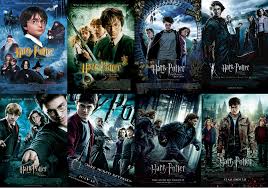Genre:
Fantasy can be defined as,"
the faculty or activity of imagining things, especially things that are impossible or improbable." In media, this idea remains true, as the fantasy genre acts as a gateway to places that are impossible, and characters that are improbable with plots that we could only imagine. Notable fantasy movies such as, "The Wizard of Oz" and, "Who Framed Mr. Rodgers" showed us the true impacts these made up people and places can truly have on the world.
Genre Conventions(content):
Fantasy movies often use ideas such as magic and fictional stories that often have basis as ancient lore in certain cultures, in order to create a premise for the film. Often the films are set in a world that is not real, and different rules govern the land. The main characters often have powers or other elements that make them particular, such as Mary Poppin with her flying balloon. Often Fantasy movies, due to their target audience, try to promote a happy ending with a "happy ever after". Plots are easily understood and straightforward, often with the main characters take a literal trip to a target location. Weapons are often seen in fantasy films, with swords or magic being a main component of a large sum of fantasy films.
Genre Conventions(production techniques):
A large sum of production techniques such as high key lighting and green screen technology is almost a staple in all fantasy movies. Saturated primary colors are also a primary technique used to develop the "unreal" aspect of the film. A large sum of visual effects are used in order to help create the "make-believe" word of the film. Production techniques that alter the regular world, are a necessity in order to create the fake world of the film.
Institutional conventions:
Marketing for fantasy movies targets young individuals, although films may have a niche due to a book or previous media form that the movie is adapted from, that draws in an older fanbase as well. Wide distribution with lots of advertisements in which the film is clearly shown as being "unreal" is a staple of marketing for fantasy movies. Budgets for fantasy films are often higher, due to the expensive price of CGI artists as well as, special effects needed to create the film. Synergy and convergence are often seen, as often film concepts can start off a novel, become a movie and then eventually a video game as often seen, all under the same company.
Film sample #1- Harry Potter
The Harry Potter series is a prominent example of the ideas above. Its imaginative world with unreal characters and a plot that is linear shows many aspects. It has a high budget and uses computer-generated images, as well as a green screen in order to display the magic world in which the film takes place. Magic is a large part of the film and is used as the main tool of combat. Overall, the Harry Potter Film Franchise embodies the fantasy genre.

Film sample #2: Alice in Wonderland
Alice in Wonderland, is one of the first films to embody conventions of fantasy. It also has a linear storyline, and its use of special effects, such as the shrinking of Alice to represent her descent to Wonderland, shows how it deserves its place in the fantasy list. It was orginally released with an intent of kids, but the orginal book struck up an interest with older aged individuals as well, who had read the book earlier as children. It ends on a good note, and represents promient theme of "happy ever after."

Famous Fantasy movies:






